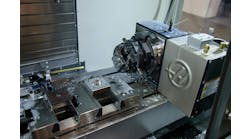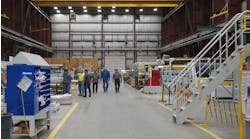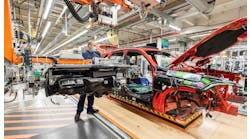Competing with their rivals for the same customers, offering similar products or services, dependent on the same suppliers, and subject to the same regulations, rules, and macroeconomic forces, cause many firms to struggle. Leadership and profitability are hard to achieve and even harder to sustain. Yet some do famously well: Toyota in autos, Southwest Airlines in commercial aviation, and a host of lesser known but equally dominant success stories across a broad range of sectors -- integrated circuit manufacturing, heavy industry, high tech, and health care.
In my book, Chasing the Rabbit: How Market Leaders Outdistance the Competition and How Great Companies Can Catch Up and Win (McGraw-Hill, October 2008), which is based on years of research in a broad variety of industries, I discuss how some companies succeed. Whereas everyone faces the difficultly of managing incredibly complex organizational processes for designing and delivering state-of-the-art products and services, the leaders do so in a way that sets them apart. Regardless of their expertise, companies will face vexing, unsolved problems around the critical questions of what market to target, what customer needs are most pressing, what offerings will meet those needs and how to generate those offerings. Most organizations do their best to make do, plod through, and cope when confronted with uncertainty about these critical questions. The very best generate new, useful knowledge with sprinter speed and marathoner endurance. They simply outrun the field.
Chasing the Rabbit has its roots in my studies of the auto industry, beginning in 1995 with a seemingly simple question: Why hadn't anyone caught Toyota? True, it had early success with reliable, affordable small cars -- perfectly timed for oil price spikes -- but what Toyota was doing had seemingly been well documented. The Machine That Changed the World introduced the world to 'lean manufacturing' and many lean Tools -- continuous flow, pull systems, standardized work, production cells. These systems were copied throughout industry. American makers had their own versions of lean -- Ford Production System, Chrysler Operating System, Global Manufacturing System and General Motors had gone as far as creating the hugely successful NUMMI (New United Motor Manufacturing, Inc.) joint venture with Toyota.
It's not that the industry hadn't improved; productivity and initial quality had improved, and much of the gap with Toyota had closed. But Toyota had not sat still. While it improved efficiency and efficacy, Toyota also increased the dimensions on which it competed, introducing cars of various sizes.Toyota introduced SUVs, a succession of minivans, and trucks while creating new brands such as Lexus, which quickly ran past Cadillac, BMW, and Mercedes and the hip, entry level Scion. Toyota hastened new model introduction and model refurbishment rate and invented new product technology such as the Prius' hybrid drive. In an intensely competitive market, Toyota won by out improving, innovating and inventing.
We see the results today. Toyota is coming off years of record profits, sufficient to cushion it during economic slowdown while other majors who barely held on during flush times are now too handicapped to survive the rough patch.
What a contrast when I joined a Toyota team. I learned its management system from the inside by developing a first-tier supplier to its Kentucky plant. On the one hand, there was tremendous demand for upfront clarification of what was thought to be needed for the day, who would do what work to achieve those objectives, how handoffs would be made between someone who started work and someone who had to pickup that work, and how work would actually be done. One could think it was command and control. Not so. Specification was to create the best known approach for succeeding. It also revealed immediately when those approaches were inadequate. Then, no one was to cope, workaround, or otherwise make due. Rather, failures -- local or systemic -- were triggers to swarm problems, contain them, and immediately investigate their causes -- imagine a CSI crew rushing to gather evidence while a crime scene is still 'hot' or a hospital code team racing to diagnosis and treat a patient the moment distress is detected.
Whereas the promise in the Big Three plant was predictable -- repeated frustration, the promise in the Toyota environment was that -- by cultivating the capabilities to (1) manage work to see problems, (2) solve problems when seen, (3) make individual discoveries systemically useful, and (4) manage so the high speed dynamic of constant discovery would not stop -- people showed up knowing that the day was likely to be successful in creating value for others, and even if it wasn't, tomorrow, next week and certainly next month would be.
As I learned, managing for high-velocity discovery was valuable not just at Toyota. Beginning in 1997, I began studying and working with Alcoa. Why? Despite the inherent incredible danger of its process technology, Alcoans worked in the country's safest worksites, with risks of on-the-job injury a tiny fraction of that elsewhere, not just other manufacturers, but even hospitals and universities. How did this come about? With a Toyota like commitment to seeing and solving problems with hyper-vigilance and energy, Alcoa discovered things it didn't fully understand about processing aluminum that created risk. And every time Alcoans discovered something new to make processes safer, they learned something about making them more efficient and effective, too. The results were superb with Alcoa out performing the Dow Jones Industrials and the S&P by two to three fold for over more than a decade.
Pick a challenging design, production, and operation environment, and nuclear propulsion is certainly at the top of the list. While nuclear power was barely an enticing idea in 1948, new science was invented, new materials were discovered, and entirely new industries were created, so by 1954 the U.S. Navy was able to launch the USS Nautilus. Since then, it and its sister ships have set all sorts of incredible milestones, while having an unbelievable safety record -- no reactor related injuries in more than sixty years. In contrast, the Soviet Navy regularly lost ships and crews and NASA lost the astronauts of Apollo I, Columbia, and Challenger because they took a more complacent approach akin to the Big Three.
How is this relevant today? When times are good, nearly anyone can earn a living. But when times are tough, it is much harder. Customers are more circumspect and financing is harder to find. Those who learn from the exemplary high-velocity organizations will be quicker to identify what customers need, faster to figure out how to satisfy those wants, and speedier to deliver the right products and services. They will run ahead and win while others wash out.
Steven J. Spear is a senior lecturer at MIT and author of Chasing the Rabbit: How Market Leaders Outdistance the Competition and How Great Companies Can Catch Up and Win. www.chasingtherabbitbook.com




